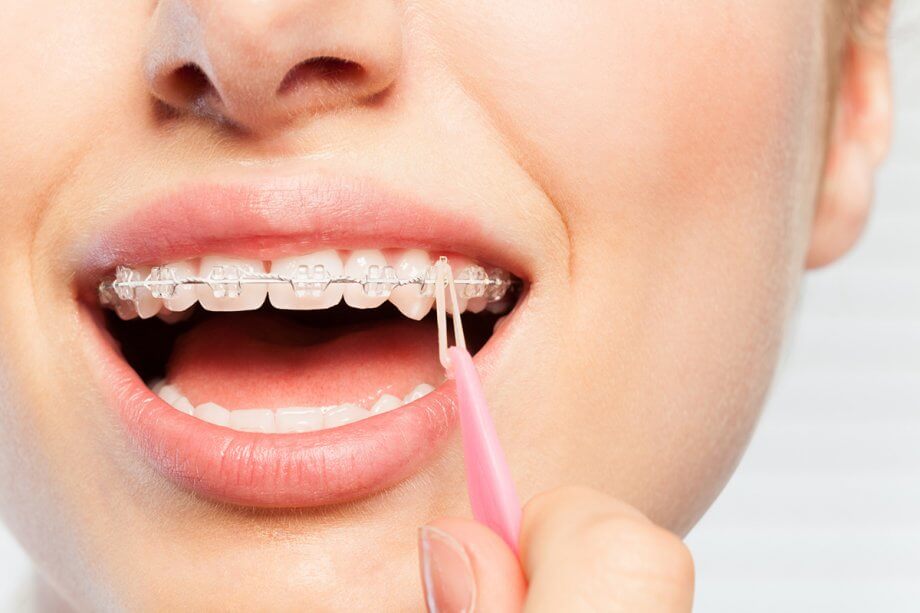If you’ve ever worn braces, you may know that rubber bands (also called elastics) are sometimes a part of the treatment process. If you are new to braces for yourself or your child, rubber bands are an important tool that can help to shift the teeth and align the bite.
How Rubber Bands Work With Braces
Braces move the teeth into proper alignment using brackets that attach to the teeth and are connected by the archwire. The archwire enacts force on the teeth to move them into the desired position. Rubber bands put additional force on the teeth to move them even further. They help to correct bite misalignment, such as overbite, underbite, crossbite, and open bite.
The rubber bands attach to hooks on the brackets. They are usually stretched between a hook on the top row of teeth and a hook on the bottom row of teeth. Rubber bands are sometimes used between brackets of teeth in a row to help close up gaps and spaces between the teeth.
Wearing Your Rubber Bands Correctly
You will be given a bag of rubber bands of a certain size. Your orthodontist will show you which brackets to attach them to. It is important that you wear your rubber bands on the correct brackets so that your teeth are moved as needed.
You can remove your rubber bands whenever you eat and brush your teeth and replace them with new ones. Rubber bands may occasionally break, but can be replaced with new ones. Your orthodontist will supply you with plenty to make sure you don’t run out.
Types of Rubber Bands Used With Braces
Rubber bands for braces are categorized by the amount of force they exert. They are mostly divided into 3 categories: light, medium, and heavy. They are also categorized by their size. Each bag of rubber bands will list it’s diameter in fractions of an inch. Orthodontic rubber bands are typically made of latex, unless a patient has a latex allergy, in which case synthetic bands can be used instead.
Rubber Band Configurations
There are a few different ways that your orthodontist may have you wear rubber bands in order to shift your teeth and bite.
- Class I: Rubber bands are stretched between brackets on teeth in a row, either on the upper or lower row of teeth. This is mainly done to close gaps between the teeth.
- Class II: Rubber bands are stretched between brackets on the upper jaw to brackets on the molars of the lower jaw to correct overbite.
- Class III: Rubber bands are stretched between brackets on the lower jaw to brackets on the molars of the upper jaw to correct underbite.
- Vertical: Rubber bands are stretched straight between upper jaw and lower jaw brackets to correct an open bite.
- Cross: Rubber bands are stretched between brackets on the upper and lower jaw across the front of your teeth to correct a crossbite.
You may wear many different sizes of rubber bands in a variety of configurations throughout your treatment. Rubber bands are most commonly used in the final stage of your treatment after your teeth are straightened to make sure your bite is properly aligned.
Do Rubber Bands Hurt?
You may find that you have some mild discomfort in the first few days of wearing rubber bands and with each change in rubber band configuration. This is because of the force the rubber bands are exerting on your teeth. Rubber bands can bring about more drastic shifts in your teeth, which can cause the support structures for your teeth to become sore. Any discomfort you feel should be manageable with over the counter pain relievers.
Smith Orthodontics Provides Comprehensive Treatment
At Smith Orthodontics we utilize every type of orthodontic treatment available to correct teeth and bite patterns. Metal braces in combination with rubber bands are a highly effective treatment for patients with all kinds of orthodontic issues from bite misalignment to crowding. This is why metal braces are still the most common type of orthodontic treatment.
Are you ready to start treatment for you or your child? Call 937-431-0947 today to schedule a consultation or request an appointment. We look forward to providing you with quality orthodontic care.

